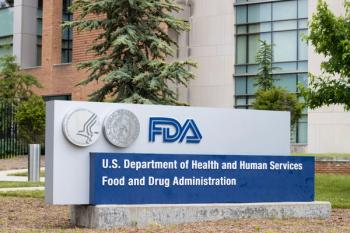
Closing the U.S./Mexico Border to Stop COVID Increased HIV Cases Instead
The efforts to prevent one disease increased another, likely due to the lack of methadone and sterile needles.
The closure of the border between San Diego and Tijuana, Mexico, increased local HIV cases during the COVID-19 pandemic, according to a new
The San Ysidro Port of Entry is the busiest land border crossing in the Western Hemisphere. Local HIV rates have been historically low despite being a major hub for risk factors such as intravenous drug use and sex work, both of which are decriminalized in Tijuana. Over the past two decades only an estimated 4% to 10% of the local drug-injecting population in both San Diego and Tijuana contracted HIV. In the past, infections have tended to travel from San Diego to Tijuana but sometime between 2003-2006 the direction reversed and went from Tijuana to San Diego.
The border was closed from March 21, 2020, to Nov. 8, 2021. To calculate the rate of HIV transmission during this time, a team of researchers from the University of California San Diego and Irvine, studied HIV infection rates at the border from October 2020 to October 2021. The team, led by Britt Skaathun, Ph.D., an adjunct professor at the University of San Diego School of Medicine, interviewed and categorized 618 participants into three groups:
- People who live in San Diego who cross the border to use intravenous drugs in Tijuana.
- People who live in San Diego and use intravenous drugs in San Diego.
- People who live in Tijuana and use intravenous drugs in Tijuana.
Blood samples were collected from participants every six months and were tested for HIV. When someone tested positive for HIV, the researchers isolated the virus, sequenced its RNA and analyzed the genetic diversity at the border to determine its origin and how each case was related. At the start, 49 participants already had HIV. By the end of the study, there were an additional 9 HIV cases, all of which had genetic sequences on both sides of the border.
"Nine sounds like a small number, but it's actually quite a lot of people because in the US, HIV incidence is relatively low," lead author Britt Skaathun, PhD, said in the release. "We were surprised to see this change in HIV status in such a short amount of time and wanted to look more closely at these clusters.”
The authors also note that with the border closed, there may have been an excess supply of drugs. With no HIV-outreach support from the U.S. during that time, cases increased. In Tijuana during the pandemic, government housing and methadone were only available to drug users with COVID symptoms.
“Efforts to end the HIV epidemic in the U.S. should take into account cross-border HIV-1 transmission,” the authors write. “Mobile harm reduction services and coordination with municipal HIV programs to initiate anti-retroviral therapy and pre-exposure prophylaxisis are needed to reduce transmission.”
Newsletter
Get the latest industry news, event updates, and more from Managed healthcare Executive.



















































